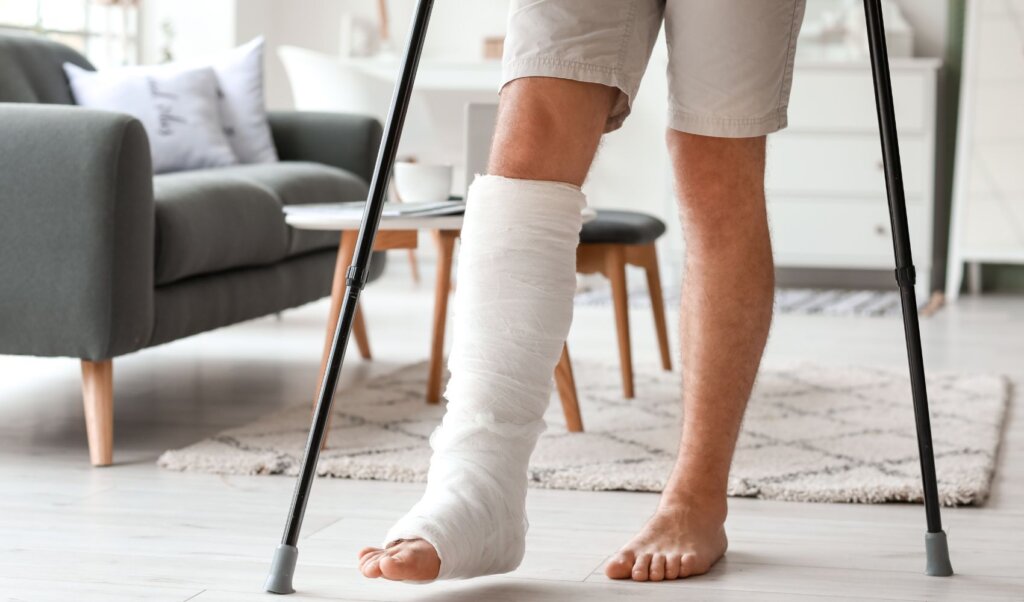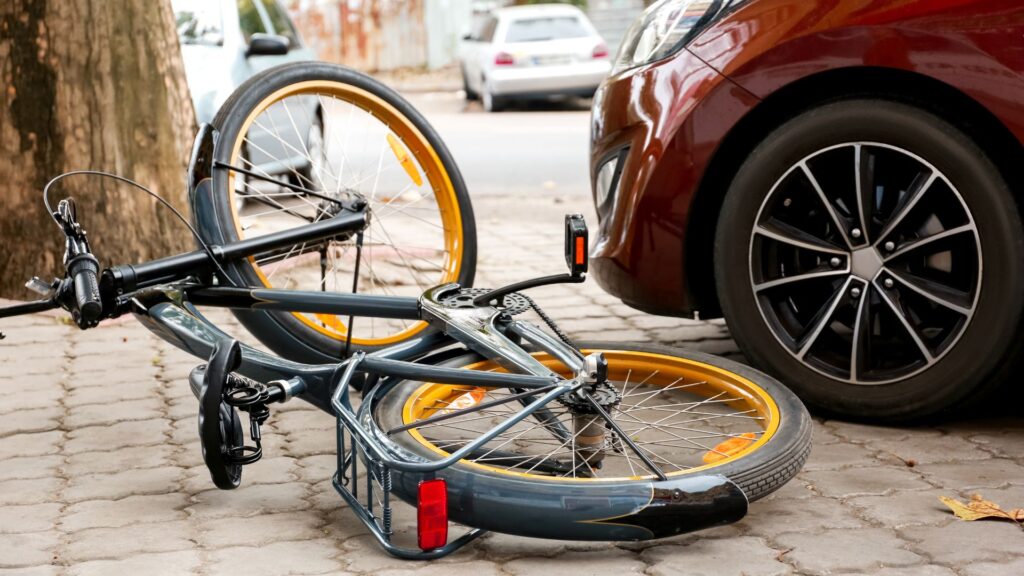About
Understanding the Tibia
Located in the lower leg, the tibia, or shinbone, is a critical player in our body’s framework. It bears most of our weight and plays a pivotal role in both knee and ankle joints. Here’s a quick glance at the tibia’s key features:
- The upper segment of the tibia forms the lower part of the knee joint.
- The bone’s lower end creates the inner bump of the ankle.
- The midsection of the tibia is the straight part we commonly refer to as the shin.
How Tibial Fractures Occur
John’s ordeal began when he collided with the suddenly opened car door, forcing his tibia to bear an excessive load, resulting in a tibial fracture. These fractures often occur from high-impact injuries or accidents, where the leg is subjected to a force beyond its tolerance.
Types of Tibial Fractures
Tibial fractures come in various forms, each with its unique characteristics. John’s X-ray revealed a spiral fracture located in the mid-section of his tibia. Here are the primary types of tibial fractures:
- Tibial Shaft Fracture: This is a break along the length of the tibia, the main weight-bearing bone of the lower leg. John’s spiral fracture, characterized by a corkscrew-like pattern, is a common example of this type.
- Proximal Tibia Fracture: Also known as a tibial plateau fracture, this occurs at the uppermost part of the tibia, where it broadens to form part of the knee joint. These fractures can be quite complex due to their involvement with the knee joint.
- Tibial Plafond Fracture: This type of fracture happens at the distal end of the tibia, where it forms part of the ankle joint. Often caused by high-energy impacts, these fractures can be challenging to treat due to the involvement with the weight-bearing surface of the ankle.
- Tibial Plateau Fracture: These are injuries to the upper part of the tibia, which forms the lower portion of the knee joint. These fractures can disrupt the stability and alignment of the knee, impacting its ability to bear weight.
Each of these fractures has unique implications and requires specialized treatment approaches. Whether a fracture is straightforward or complex, understanding its nature is the first step towards effective management and recovery.
Diagnosis
Recognizing the Symptoms and Signs
When John faced his cycling mishap, his symptoms were immediate and intense, mirroring the classic signs of a tibial fracture. Here are some of the symptoms John experienced, which are also common in such fractures:
- Intense Pain: One of the most telling signs of a tibial fracture, John felt a sharp, severe pain that intensified with any attempt to move or put weight on his leg.
- Swelling and Bruising: John noticed a rapid onset of swelling around his lower leg. Accompanying the swelling was a deep, bruise-like discoloration spreading across the affected area.
- Deformity: In more severe cases, like John’s, there might be a visible misalignment or deformity in the leg.
- Inability to Bear Weight: John found it extremely difficult, almost impossible, to bear weight on his injured leg, a strong indicator of a possible fracture.
- Audible Crack or Pop: At the moment of his accident, John heard a distinct crack – a sound many people report at the time of a fracture.
Each of these symptoms pointed towards a possible tibial fracture for John, prompting him to seek immediate medical attention. Not all fractures are the same, but these signs serve as red flags, prompting urgent medical evaluation.
Navigating the Diagnostic Process
The team at Urgent Care Brisbane leapt into action to assess John’s injury. Their diagnostic process was thorough, efficient, and crucial for John’s recovery. Here’s a breakdown of the steps they took:
- Swift Assessment: The medical team at Urgent Care Brisbane initially assessed John’s leg visually and physically, taking note of the apparent deformity, swelling, and his pain levels.
- X-ray Examination: The first line of imaging in such injuries, an X-ray, was promptly conducted. This allowed the team to visualize the extent of John’s tibial fracture and plan the next steps.
- CT Scan: In more complex cases, or when the X-ray results aren’t definitive, a CT scan may be used. It provides a more detailed, 3D image of the fracture, helping in understanding the intricacies of the break.
- MRI: Occasionally, an MRI might be required, especially when soft tissue damage is suspected. In John’s case, it was not needed, but it remains a valuable tool in assessing knee injuries and detecting any concurrent ligament or meniscus damage.
Through this detailed diagnostic process, the team at Urgent Care Brisbane could accurately confirm John’s tibial fracture, understand its severity, and devise the best treatment plan.
Treatment

Handling Tibial Fractures: Management Techniques and Possible Complications
Managing a tibial fracture is a customized process that depends largely on the specifics of the fracture itself. For someone like John, the road to recovery included the following steps:
- Non-operative Treatment: In John’s case, where the fracture was relatively simple and the bone fragments were well aligned, a cast was applied. The cast offers stabilization and provides the necessary environment for the bone to heal naturally.
- Operative Treatment: In more complex or severe cases, surgery might be necessary. Techniques can range from internal fixation, where metal rods or screws are used to hold the bone fragments in place, to external fixation, where a frame outside the body is used.
- Rehabilitation: Regardless of whether the treatment is operative or non-operative, rehabilitation is a crucial component of recovery. This typically includes physical therapy, exercises to strengthen the muscles, and gradual reintroduction of weight-bearing.
However, it’s important to note that complications can arise during the management of tibial fractures. These might include:
- Infection: Particularly in the case of open fractures, where the bone breaks through the skin, there’s a risk of infection. This is treated aggressively with antibiotics and sometimes additional surgery.
- Non-union: In some cases, the fracture might fail to heal correctly, resulting in non-union. This complication is more common in severe fractures and those with poor blood supply.
- Malunion: Sometimes, the bone may heal in an incorrect position, which can impact function. This might require surgical correction.
- Compartment Syndrome: This is a serious condition where swelling and pressure within a muscle compartment (common in the leg) can compromise blood flow. It needs immediate medical attention.
- Blood Clots: Immobility following a fracture can lead to the development of blood clots in the leg. These can be life-threatening if they travel to the lungs.
By understanding these potential complications, the team at Urgent Care Brisbane is equipped to prevent, recognize, and manage them effectively, ensuring the best possible outcome for patients like John.
Next Steps
Navigating Tibial Fractures with Urgent Care Brisbane
- Swift Evaluation: Upon your arrival at Urgent Care Brisbane, expect an immediate and thorough assessment by a healthcare professional. Our team is primed to respond promptly, ensuring your condition is swiftly evaluated.
- On-Site Radiology: With our state-of-the-art on-site X-ray services, we provide an accurate diagnosis and a comprehensive understanding of the injury’s extent. This immediate insight allows us to plan the best course of action for your treatment.
- Immediate, Tailored Care: Depending on your injury’s severity, our healthcare providers will initiate the appropriate treatment. This may involve applying a synthetic cast for stable fractures or performing a closed reduction procedure for more complex cases.
- Equipments at Your Disposal: We understand the importance of mobility during your healing journey. Therefore, we have moon boots and crutches readily available on-site to aid your movement and independence while the fracture heals.
- Regular Follow-Up Appointments: Healing is a process, and we’re with you every step of the way. Our regular follow-up appointments ensure we can monitor your progress, adjust your treatment plan if necessary, and guide you towards a successful recovery.
John’s journey from a painful tibial fracture to a triumphant return to cycling is a testament to the comprehensive care provided at Urgent Care Brisbane. His experience encapsulates the full cycle of understanding, diagnosing, and managing tibial fractures.
Whether you’re dealing with tibial fracture or any other fracture , Urgent Care Brisbane is equipped to guide you through your healing journey. We understand that a tibial fracture is more than just a bone injury—it’s an interruption to your life.
But with our comprehensive care and management approach, we aim to help you reclaim not just your health, but your lifestyle too. From the first hint of a fracture, through the initiation of physical therapy, and beyond, Urgent Care Brisbane is committed to assisting you every step of the way.
Tibial fractures might be the result of high energy impacts, but your recovery needn’t be a high-stress process. With Urgent Care Brisbane, you can rest easy knowing you’re in capable hands. We’re here to ensure that, like John, you can overcome your tibial fracture and return to the activities you love.

